

| Tundra Spirits Siberian Husky Library |
Follow The Lead Dog |
Poisons Substances,
Food, and Plants
Food, and Plants

Poisonous Household Items, Foods, and Plants Here is a list of every day house hold items that must be kept from your dogs |
Poisonous Foods It is not chocolate itself that is poisonous to dogs, it is the theobromine, a naturally occurring compound found in chocolate. Theobromine causes different reactions to different dogs: dogs with health problems, especially epilepsy, are more affected by theobromine than healthy dogs. Theobromine can trigger epileptic seizures in dogs prone to or at risk of epilepsy. The size of the dog will also be a major factor: the smaller the dog, the more affected it is by the same amount than a larger dog. Therefore, toxicity is described on a mg/Kg basis. Furthermore, theobromine can cause cardiac irregularity, especially if the dog becomes excited. Cardiac arrhythmia can precipitate a myocardial infarct which can kill the dog. Theobromine also irritates the GI tract and in some dogs can cause internal bleeding which in some cases kills them a day or so later. Theobromine is also present in differing amounts in different kinds of chocolate. Milk chocolate has 44-66 mg/oz, dark chocolate 450 mg/oz and baking/bitter chocolate or cocoa powder varies as much as 150-600 mg/oz. How much chocolate a dog can survive depends on its weight (and other unknown circumstances). Under 200 mg theobromine per kg body weight no deaths have been observed. Theobromine will stay in the bloodstream between 14 and 20 hours. It goes back into the bloodstream through the stomach lining and takes a long time for the liver to filter out. Within two hours of ingestion, try inducing vomiting unless your dog is markedly stimulated, comatose, or has lost the gag reflex. If your dog has eaten a considerable amount of chocolate, or displays any of the above symptoms, take it to the vet without delay. In the absence of major symptoms, administer activated charcoal. The unabsorbed theobromine will chemically bond to this and be eliminated in the feces. In pinch, burnt (as in thoroughly burnt, crumbling in hand) toast will do. Nuts: Walnuts are poisonous to dogs and should be avoided. In particular, there is a type of fungus common to walnuts (especially wet deadfall walnuts) that will cause severe episodes of seizuring. Many nuts are not good for dogs in general, their high phosphorous content is said to possibly lead to bladder stones. Onions: Onions, especially raw onions, have been shown to trigger hemolytic anemia in dogs. (Stephen J Ettinger, D.V.M and Edward C. Fieldman, D.V.M. 's book: Textbook of Veterinary Internal Medicine vol. 2 pg 1884.) Also: "Six Cases of Heinz Body Haemolytic Anaemia Induced by Onion and/or Garlic Ingestion" - CM Edwards and CJ Belford Aust.Vet.Prac. 26 (1) March 1996, 18-22. Potatoes: Potato poisonings among people and dogs have occurred. Solanum alkaloids can be found in in green sprouts and green potato skins, which occurs when the tubers are exposed to sunlight during growth or after harvest. The relatively rare occurrence of actual poisoning is due to several factors: solanine is poorly absorbed; it is mostly hydrolyzed into less toxic solanidinel; and the metabolites are quickly eliminated. ** Note that cooked, mashed potatoes are fine for dogs, actually quite nutritious and digestible** Turkey Skin: Turkey skin is currently thought to cause acute pancreatis in dogs. Grapes: It has recently been confirmed that grapes and raisins can cause acute renal failure in dogs. The exact mechanism is not known, nor any means to determine the susceptibility of an individual dog. However one vet [1] believes it may be an acute auto-immune response to plant-borne viruses [2] in the same manner as FIP in cats. While as little as one raisin can be fatal to a susceptible ten pound dog, many other dogs have eaten as much as a pound of grapes or raisins at a time without ill effects. The dog usually vomits a few hours after consumption and begins showing signs of renal failure three to five days later. |
Plants that are toxic to Dogs |
Home
The Husky
Food
Memorials
| Emergency #'s |
Notable Huskies
Health News
Lost Pets

Acetaminophen
AntiFreeze
Aspirin
Bleach
Boric Acid
Brake Fluid
Carbon Monoxide
Carburetor Cleaner
Christmas Tinsel
Cleaning Fluid
Deodorants/Deodorizers
Detergents
Disinfectants
Drain Cleaner
Dye
Fungicides
Furniture Polish
Gasoline
Hair Colorings
Herbicides
Insecticides
Kerosene
Laxatives
AntiFreeze
Aspirin
Bleach
Boric Acid
Brake Fluid
Carbon Monoxide
Carburetor Cleaner
Christmas Tinsel
Cleaning Fluid
Deodorants/Deodorizers
Detergents
Disinfectants
Drain Cleaner
Dye
Fungicides
Furniture Polish
Gasoline
Hair Colorings
Herbicides
Insecticides
Kerosene
Laxatives
Lead
Lye
Matches
Metal Polish
Mineral Spirits
Mothballs
Nail Polish &
Remover
Paint & Remover
Perm Solutions
Phenol
Photo Developer
Rat Poison
Rubbing Alcohol
Shoe Polish
Sleeping Pills
Soaps
Suntan Lotions
Tar
Turpentine
Windshield Fluid
Woodstains
Lye
Matches
Metal Polish
Mineral Spirits
Mothballs
Nail Polish &
Remover
Paint & Remover
Perm Solutions
Phenol
Photo Developer
Rat Poison
Rubbing Alcohol
Shoe Polish
Sleeping Pills
Soaps
Suntan Lotions
Tar
Turpentine
Windshield Fluid
Woodstains
Chocolate, tea, coffee & cola
NutsTea
Onions
Potatoes
Turkey Skin
Grapes
NutsTea
Onions
Potatoes
Turkey Skin
Grapes
Inducing Vomiting
If you need to induce vomiting,
first make sure that it's
appropriate to do so. Don't
induce vomiting:
More than two hours after
ingesting problematic substance
when the substance is an acid,
alkali, solvent, or petroleum
product, as it will do as
much damage on the way up as
it did the way down
when dog is comatose or very
depressed
To induce vomiting:
If you need to induce vomiting,
first make sure that it's
appropriate to do so. Don't
induce vomiting:
More than two hours after
ingesting problematic substance
when the substance is an acid,
alkali, solvent, or petroleum
product, as it will do as
much damage on the way up as
it did the way down
when dog is comatose or very
depressed
To induce vomiting:
- 1 teaspoon hydrogen
peroxide per 30lbs body
weight - give once
- repeat after ten minutes;
- don't administer more
than three times; some
dogs will drool and look
miserable before vomiting
1. Amaryllis
Popular during the spring holidays, this
plant can cause vomiting, depression,
diarrhea, excessive drooling, and
tremors
Popular during the spring holidays, this
plant can cause vomiting, depression,
diarrhea, excessive drooling, and
tremors

2. Azalea
Prevalent in many backyards, this
common plant can cause vomiting,
diarrhea, a drop in blood pressure,
coma, and can even be life threatening
Prevalent in many backyards, this
common plant can cause vomiting,
diarrhea, a drop in blood pressure,
coma, and can even be life threatening

3. Bird of Paradise
Not to be confused with the less toxic
Strelitzia reginae, this plant, if
consumed, can cause oral irritation,
excessive drooling, vomiting, diarrhea,
and difficulty swallowin
Not to be confused with the less toxic
Strelitzia reginae, this plant, if
consumed, can cause oral irritation,
excessive drooling, vomiting, diarrhea,
and difficulty swallowin
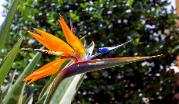
4. Daffodil
A favorite of gardeners, this plant can
cause vomiting, diarrhea, arrhythmia,
and convulsions
A favorite of gardeners, this plant can
cause vomiting, diarrhea, arrhythmia,
and convulsions
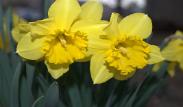
5. Eucalyptus
This plant, if consumed, can cause
excessive drooling, vomiting, diarrhea,
depression, and weakness
This plant, if consumed, can cause
excessive drooling, vomiting, diarrhea,
depression, and weakness
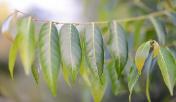
6. Hyacinth
Consumption can cause intense
vomiting, diarrhea, depression, and
tremors
Consumption can cause intense
vomiting, diarrhea, depression, and
tremors
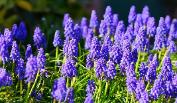
7. Hydrangea
Brightly colored but toxic, this plant can
cause vomiting, depression, diarrhea,
and other gastrointestinal disturbances
Brightly colored but toxic, this plant can
cause vomiting, depression, diarrhea,
and other gastrointestinal disturbances

8. Iris
While the entirety of this plant is toxic,
the rhizomes (underground stem) are
most potent and, if ingested, this plant
can cause vomiting, drooling, lethargy,
and diarrhea
While the entirety of this plant is toxic,
the rhizomes (underground stem) are
most potent and, if ingested, this plant
can cause vomiting, drooling, lethargy,
and diarrhea

9. Calla Lily
If one of these uniquely shaped flowers
is ingested, it can cause oral irritation,
a burning sensation on the tongue and
lips, excessive drooling, vomiting, and
difficulty swallowing
If one of these uniquely shaped flowers
is ingested, it can cause oral irritation,
a burning sensation on the tongue and
lips, excessive drooling, vomiting, and
difficulty swallowing
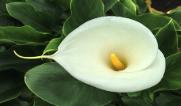
10. Morning Glory
These cone-shaped flowers can cause
vomiting and even hallucinations
These cone-shaped flowers can cause
vomiting and even hallucinations

11. Rhododendron
It only takes consuming a few leaves to
create a serious reaction, including
excessive drooling, loss of appetite,
diarrhea, colic, depression, weakness,
stupor, paralysis, or worse – your dog
may become comatose or even die
It only takes consuming a few leaves to
create a serious reaction, including
excessive drooling, loss of appetite,
diarrhea, colic, depression, weakness,
stupor, paralysis, or worse – your dog
may become comatose or even die
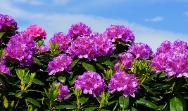
12. Rose
Even though the petals and leaves of
this plant are not considered toxic and
can be safe to chew on, if your pup
actually eats the rose’s blossom or
leaves, it can cause an upset stomach
Even though the petals and leaves of
this plant are not considered toxic and
can be safe to chew on, if your pup
actually eats the rose’s blossom or
leaves, it can cause an upset stomach
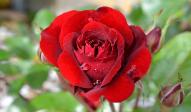
13. Jade
Consumption can cause vomiting, a
slow heart rate, incoordination, and
depression, which can be hard to spot
Consumption can cause vomiting, a
slow heart rate, incoordination, and
depression, which can be hard to spot
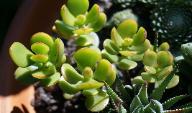
14. Tomato plants
While the popular fruit produced by
this plant isn’t poisonous, the plant
itself is toxic to dogs and produces
symptoms such as hypersalivation,
severe upset stomach, depression,
weakness, dilated pupils, and slow
heart rate
While the popular fruit produced by
this plant isn’t poisonous, the plant
itself is toxic to dogs and produces
symptoms such as hypersalivation,
severe upset stomach, depression,
weakness, dilated pupils, and slow
heart rate
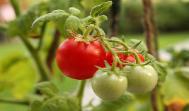
15. Tulip
Pretty but poisonous, the bulb of this
plant, if ingested, can cause oral
irritation, excessive drooling, and
nausea
Pretty but poisonous, the bulb of this
plant, if ingested, can cause oral
irritation, excessive drooling, and
nausea

| Reference for the Plant Info and pictures: Thank you ASPCA |
Book Club
Events

undra

pirits
First Aid

Husky Of the Month
